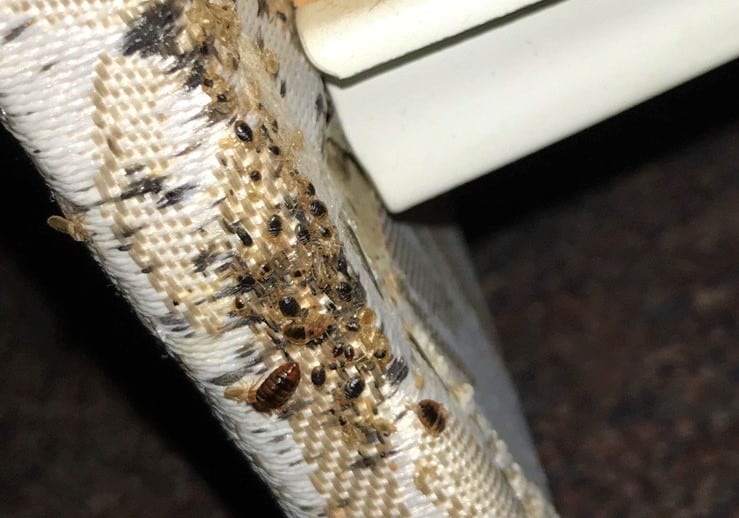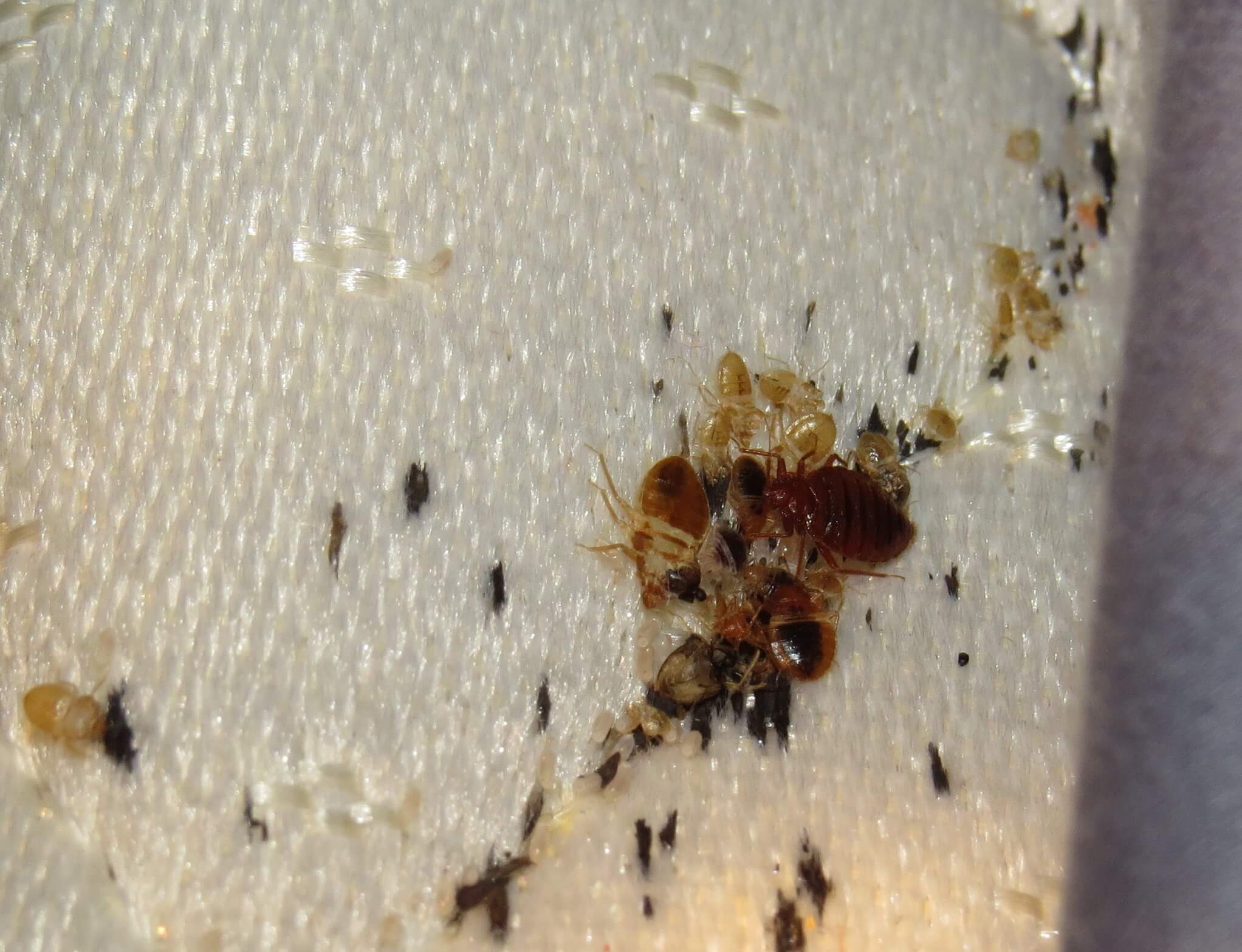Reliable Exterminator Arlington VA for Bed Bug Heat Treatment
Effective Bed Bug Therapy Choices for a Pest-Free Home: Contrasting Chemical, Heat, and Natural Treatments
In the mission for a pest-free home, the battle versus bed insects can be especially difficult. As we browse with the landscape of bed bug therapies, checking out the nuances of each method can drop light on the most suitable remedy for a home tormented by these persistent bugs.
Chemical Treatments
Chemical therapies, commonly used in specialist pest control settings, include the application of pesticides especially formulated to target and remove bed pests successfully. These therapies are very effective in eliminating bed pest infestations due to the potent nature of the chemicals utilized.

Warmth Therapies

One of the primary benefits of heat treatments is their capacity to kill bed bugs at all stages of development, including eggs, fairies, and grownups. This comprehensive method assists stop reinfestations, supplying a much more long-lasting service to the trouble. Furthermore, warm treatments are eco-friendly and do not entail making use of possibly unsafe chemicals, making them a more secure choice for homes with children, pets, or individuals sensitive to standard pesticides.
While warm treatments can be extremely reliable, it is vital to make sure that the procedure is conducted properly by qualified specialists to maximize its effectiveness and protect against any type of possible safety dangers.
All-natural Remedies
When considering different methods for attending to bed pest infestations, all-natural solutions present a environmentally friendly and non-toxic approach worth checking out. Several property owners are turning to all-natural solutions as a much safer alternative for controlling bed bugs without using extreme chemicals. One preferred all-natural remedy is diatomaceous earth, a great powder made from fossilized algae that works by drying out and eventually eliminating bed pests. An additional reliable all-natural option is vital oils, such as lavender, tea tree, and pepper mint oils, recognized for their insect-repelling homes. These oils can be weakened and splashed around ravaged locations to deter and eliminate bed bugs.
Furthermore, vapor therapy is a chemical-free and natural technique that involves making use of heats to kill bed bugs and their eggs. Steam can penetrate right into fractures and crevices where bed bugs conceal, successfully getting rid of invasions. Cushion coverings made from all-natural products give a physical barrier versus bed bugs, preventing them from getting away the mattress or accessing. On the whole, all-natural treatments offer an alternative approach to bed insect control that is mild on the atmosphere and safe for both animals and human beings.
Contrast of Efficiency
To analyze the efficiency of bed pest therapy alternatives, it is vital to compare the effectiveness of chemical, warm, and all-natural solutions in removing infestations. Chemical treatments typically include using chemicals especially formulated to target and get rid of bed pests. These chemicals can be very effective in killing bed insects at different phases of their lifecycle, from eggs to grownups. Nonetheless, problems concerning the possible wellness threats connected with chemical direct exposure and the growth of chemical resistance in bed pest populaces have actually led some people to look for alternate therapy methods.
Heat therapy is one more widely made use of technique for click over here now getting rid of bed pests. By raising the temperature in plagued locations to degrees dangerous to bed insects, heat therapies can efficiently remove an entire invasion without using chemicals. This method is particularly prominent due to its capacity to permeate fractures and crevices where bed insects might conceal.
All-natural treatments, such as diatomaceous planet, important oils, and vapor, have acquired appeal as much safer choices to chemical treatments. While these approaches may be much less damaging to pets and people, their performance in completely eliminating bed pest infestations can differ. It is YOURURL.com very important to thoroughly take into consideration the advantages and disadvantages of each treatment choice when making a decision on one of the most suitable method for addressing a bed insect problem.

Cost and Ecological Factors To Consider
Considering both economic effects and environmental effect is crucial when examining bed pest treatment options. Cost plays a substantial duty in decision-making, as different treatment techniques differ extensively in price. Chemical treatments are often cheaper ahead of time but may need multiple applications, boosting the general price. Warmth treatments, while effective, can be expensive as a result of the customized tools and time entailed. Natural remedies might appear cost-effective, but their efficacy can be inconsistent, causing extra expenses in the long run.
In terms of environmental factors to consider, chemical treatments raise issues as a result of the potential harm they pose to humans, animals, and the environment. Chemicals can leave deposits that remain in the air and on surface areas, affecting indoor air quality. Warmth therapies, although chemical-free, take in a considerable amount of power, adding to carbon exhausts. All-natural treatments are typically considered much more eco-friendly; nonetheless, their influence on the setting can vary depending upon the ingredients made use of and their sourcing.
When picking a bed insect treatment, considering the price versus the ecological impact is vital to make an enlightened decision that lines up with both financial and eco-friendly concerns.
Verdict
Finally, when taking into consideration efficient bed bug therapy options for a pest-free home, it is essential to weigh the benefits and downsides of chemical, heat, and all-natural remedies. Each approach has its own efficiency, price, and ecological considerations to consider (Exterminator Near Me). By comparing these elements, people can make an educated decision on the most effective approach to get rid of bed pests and prevent future invasions in their living rooms
These treatments are very reliable in eliminating bed bug visit the website invasions due to the powerful nature of the chemicals used.In dealing with bed insect invasions, a different strategy to chemical treatments involves using warmth as a very effective method for eliminating these bugs.To analyze the effectiveness of bed pest therapy options, it is vital to contrast the efficiency of chemical, warm, and all-natural treatments in removing problems. By elevating the temperature in ravaged locations to levels deadly to bed insects, warm treatments can successfully remove a whole invasion without the use of chemicals.In final thought, when thinking about reliable bed insect therapy choices for a pest-free home, it is essential to weigh the benefits and downsides of chemical, heat, and all-natural treatments.